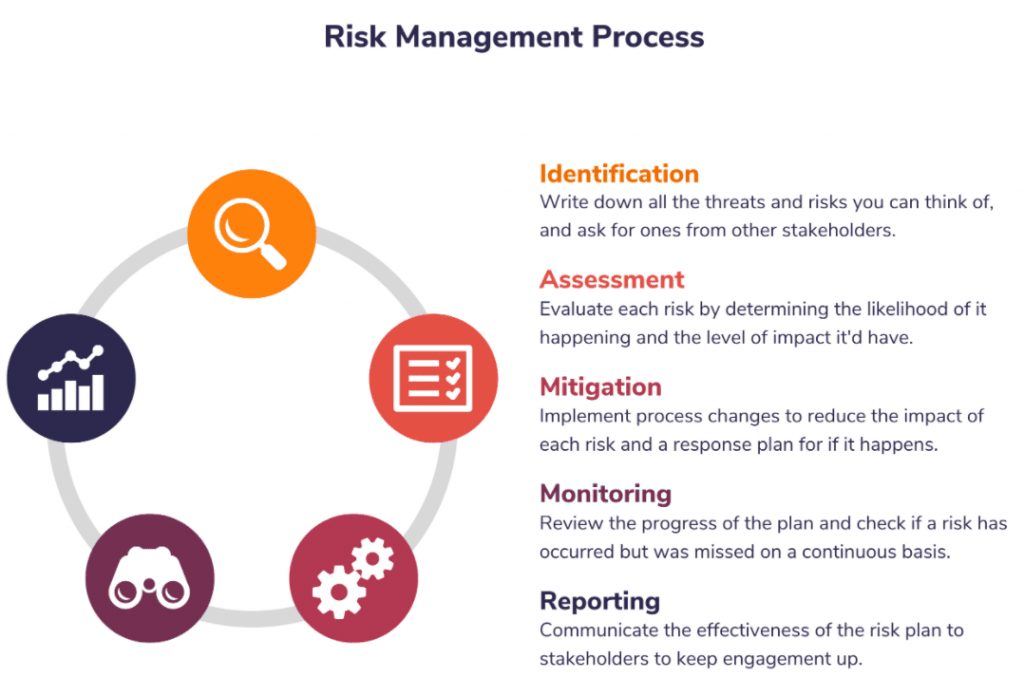
You determine which criteria are ultimately decisive as to whether you decide on action option A or B. Often, these are business key figures that can be calculated according to a defined procedure based on several parameters. By varying the parameters, different scenarios are calculated to make it clear to what extent there is a risk and how high the risk can be. The following procedures help evaluate options for action:
- Break-even analysis
- Amortization calculation
- Profit comparison calculation
- Net present value method
- Benefit analysis
- Cost-benefit analysis
Problems with Risk Analysis While Dealing with Quantitative Claim Risk Analysis Services
The business methods and procedures for investment calculation initially appear to be very precise. But the results they provide for risk analysis are uncertain. Because they relate to the future – and it cannot be foreseen. The parameters that go into the individual calculation methods cannot be determined, but only estimated or even assumed. In order to consider different scenarios here, the parameters have to be varied. The respective assumptions behind it should be discussed and discussed in the team. To do this, you should hold a workshop with experts from your company. Here you discuss possible characteristics and the probabilities for these characteristics for the individual parameters and decision criteria.
Because the better your assessments, the better is risk analysis results are; the quantitative claim risk analysis services from professional companies can be quite beneficial. If your judgments are arbitrary, the outcome is arbitrary. It is all the more important to discuss and reflect on the assumptions and assessments in the team. The discussion process also shows what is important later in the implementation and what is important that the assessments and forecasts are then also implemented. In part, this is up to you.
Analysis of the Results
In the last step, the results are analyzed. The criterion that should be decisive for your decision is determined. From a business point of view, this can be the return on investment (ROI) or the payback period. However, contradictions often arise during the analysis: The option for action with the fast amortization period has a low ROI and vice versa. Then it depends on whether you are risk-averse or risk-loving in your decisions. You should bear this in mind and be aware of this as part of your decision-making process and with your team. Hold on tight:
- Which course of action is your favorite?
- What are the reasons for this option?
- Which conditions and developments must be met so that the expected consequences of the option of action actually occur?
- What is the best and what is the worst?
- Which developments can you influence or shape?
- What exactly do you have to do to do this?
- When and under what conditions can you revise your decision or adjust the course of action?
If you seriously discuss these questions in your workshop and with your team and the decision-makers and record and document the results, then you have everything you need for well-founded risk analysis.
Clarify the Decision-Making Situation
First, describe your decision-making situation. Clarify with the decision-makers what it should be about and how far-reaching the decision is assessed, for which you should carry out a risk analysis with different scenarios.
Hold on tight:
- What alternatives or options do you have?
- What are the alternatives?
Define Criteria for Evaluation
Then determine which goals are most important for the decision and which decision criteria and success factors you derive from them.
- What are the most important criteria for choosing an alternative?
- Which parameters are the basis for the criteria?
- Which method do you use to calculate and determine possible characteristics of the criteria?
Clarify in your team what is important for your decision and which parameters you want to use in risk analysis, and when describing different scenarios. To do this, plan a meeting or workshop using the following template (schedule).
Run Through Scenarios for The Risk Analysis
You can use the following two Excel tables for calculating the best alternative and course of action with the probabilities of the assumptions occurring during the workshop. It is the basis for the following calculations:
- For the sales price, enter the possible characteristics that can possibly be realized on the market.
- Estimate the probabilities with which the sales price can be realized. Both should be the result of the workshop.
- Proceed in the same way for the other parameters: sales quantity, direct unit costs, fixed costs, and investment amount.
You can adapt the table to your decision-making situation. First, name the alternatives and your options for action. Then select the criteria that are relevant to the decision. You can then have different cases calculated in the tables – depending on how you set individual parameters. In this way, you can see what distinguishes the best case and the worst case.
Develop Decision Trees
In a risk analysis, decision trees help represent different developments and forecasts for the future and make the consequences associated with them visible. In doing so, you estimate the probabilities with which individual consequences and effects will occur. You then calculate expected values and extreme values for your options for action and can thus recognize:
* What are the consequences of choosing an alternative?
* What are the consequences? For example, on business indicators?
* How high are the expected values for the corresponding key figures?
In an action plan, you record what you need to pay attention to when implementing the decision. In this way, you ensure that you actually achieve the results you have based on your considerations.
